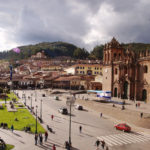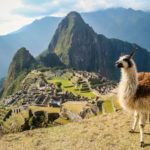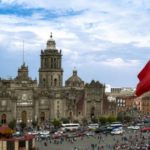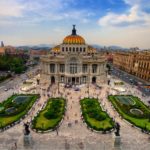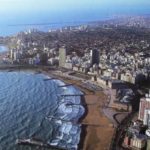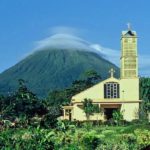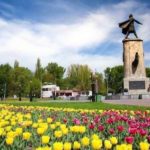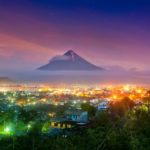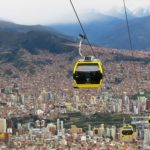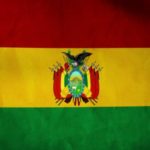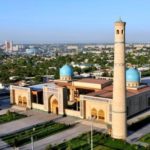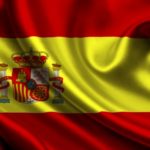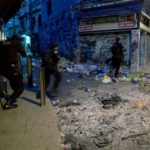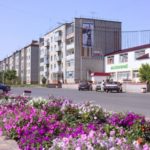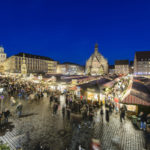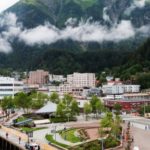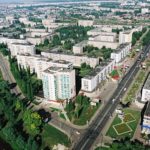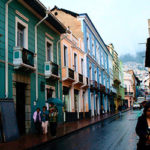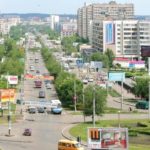Interesting Facts about Lima
 The Peruvian capital Lima is a very unusual city. Here are woven together technological civilization and the traditions of local Indians, the indigenous people of Peru. At the same time, the colonial image of the city preserved in full, and that is why so many tourists come to Lima every year. True, this city is as dangerous as it is beautiful, as, indeed, most of the megalopolises of Latin America.
The Peruvian capital Lima is a very unusual city. Here are woven together technological civilization and the traditions of local Indians, the indigenous people of Peru. At the same time, the colonial image of the city preserved in full, and that is why so many tourists come to Lima every year. True, this city is as dangerous as it is beautiful, as, indeed, most of the megalopolises of Latin America.
Founded by Spanish conquistadors, this city has long been the center of all the colonial possessions of Spain in these parts.
In Lima, there are twice as many people as in St. Petersburg.
Before the arrival of the conquistadors on these lands there were settlements of the ichma Indians, peaceful farmers and fishermen. Incompetent in battles, they quickly fell victim to the invaders.
When founded, Lima was called “Ciudad de los Reyes”, which is translated from Spanish as “City of Kings”.
In colonial times, it was the richest city in all of Latin America.
Because of the wealth of riches flowing here from all the environs, Lima was always at risk — pirate ships often kept watch at ships entering or leaving its port. The authorities even had to build a powerful fort to protect the city.
In 1687, a powerful earthquake destroyed the walls and razed half of Lima to the ground, due to which it lost its influence and wealth. Subsequently, the city was rebuilt, but in 1746 another earthquake destroyed it again.
The entire local economy was tied to trade with Spain, so local authorities did not support the independence movement. Their fate was decided when the rebellious General José de San Martin captured the city and proclaimed independence.
In just 40 years, from 1940 to 1980, Lima’s population increased 8 times, from 600,000 to 4.8 million people.
A significant proportion of the Peruvian capital are dangerous slums. Far from all of their inhabitants are connected with crime, they themselves suffer at the hands of bandits. However, after dark, many streets leading to slum areas are blocked by high gates and roadblocks, on which armed soldiers and armored vehicles are on duty. If this is not done, members of local gangs will terrorize the sleeping city.
In street cafes of Lima you can eat tasty and satisfying meals for 3 dollars.
Locals, visiting cafes and restaurants, try to sit away from the entrance, and never sit back to the street. Knowing firsthand about the robberies, they always try to control the situation.
All who can afford it live in protected residential complexes. They usually represent 3-5 multi-storey buildings with all the comforts and a fenced territory with round-the-clock security, parking and in general all the necessary. Without an invitation to get there can not.
Residents of Lima in the mass are very benevolent, but they do not like being photographed. But they often, out of kindness, warn inexperienced tourists that it’s better not to go to that alley, because they can rob there.
Formally, the port area of Lima is considered a separate city, Callao, but de facto it has long been one of the districts of the capital.
It is almost always hot here, but it rains very little during the whole year.
Lima provides Peru with about 2/3 of the country’s total GDP.
In any cafe they serve traditional Peruvian food, ceviche. This dish is made from raw fish poured with lemon juice. Distantly reminiscent of Japanese sushi and sashimi. These, not those that are served in Russian sushi bars. This dish is so popular here that in 2003 in Lima they even erected a monument to him.
One of the largest Croatian diasporas in the world resides in the Peruvian capital.
One of the most interesting tourist spots in Lima is the Larco Museum. There are more than 45 thousand priceless exhibits belonging to the civilization of the Incas and other local tribes smaller.
In the poor areas surrounding the city, there is often no water supply, no sewage, or electricity.
Since the beginning of the 21st century, the dilapidated historic center of Lima has been restored. This helped attract many tourists to the country.
For any question, you can and should contact the police. The police are generally standing on every corner and patrolling every crowded street. True, almost no one speaks English here, but, as practice shows, the Lima police really always try to help the guests of the capital and protect them from trouble.
Lima accounts for almost a third of Peru’s population.
In June and December the city is covered with dense dense fog. This is due to the peculiarities of the local climate and the sea currents washing these shores.
The lowest temperature ever recorded in Lima is +8.9 degrees.
About 40% of the local population of Lima is Europeans or their direct descendants. In general, Indians and mestizos predominate in the population of Peru, but in the capital the situation is different. In addition, many expats live here.
